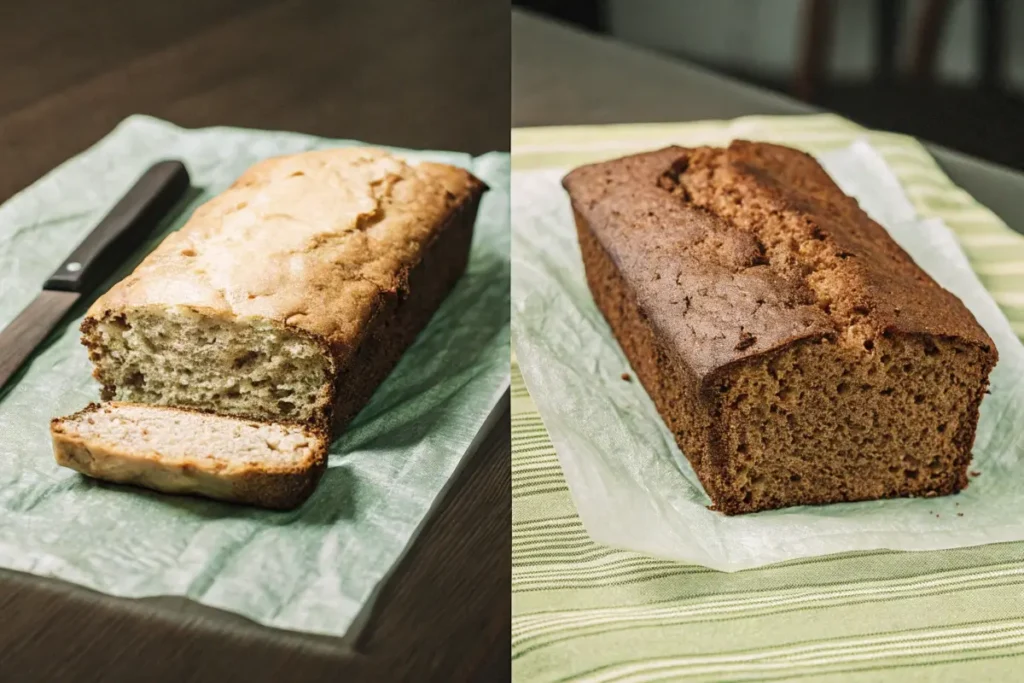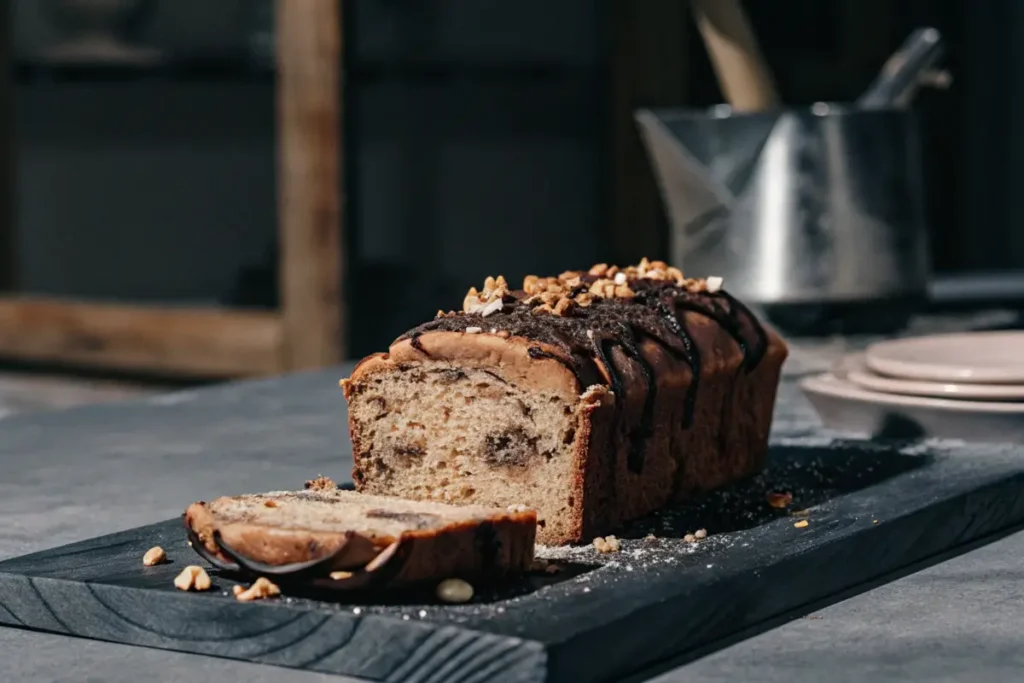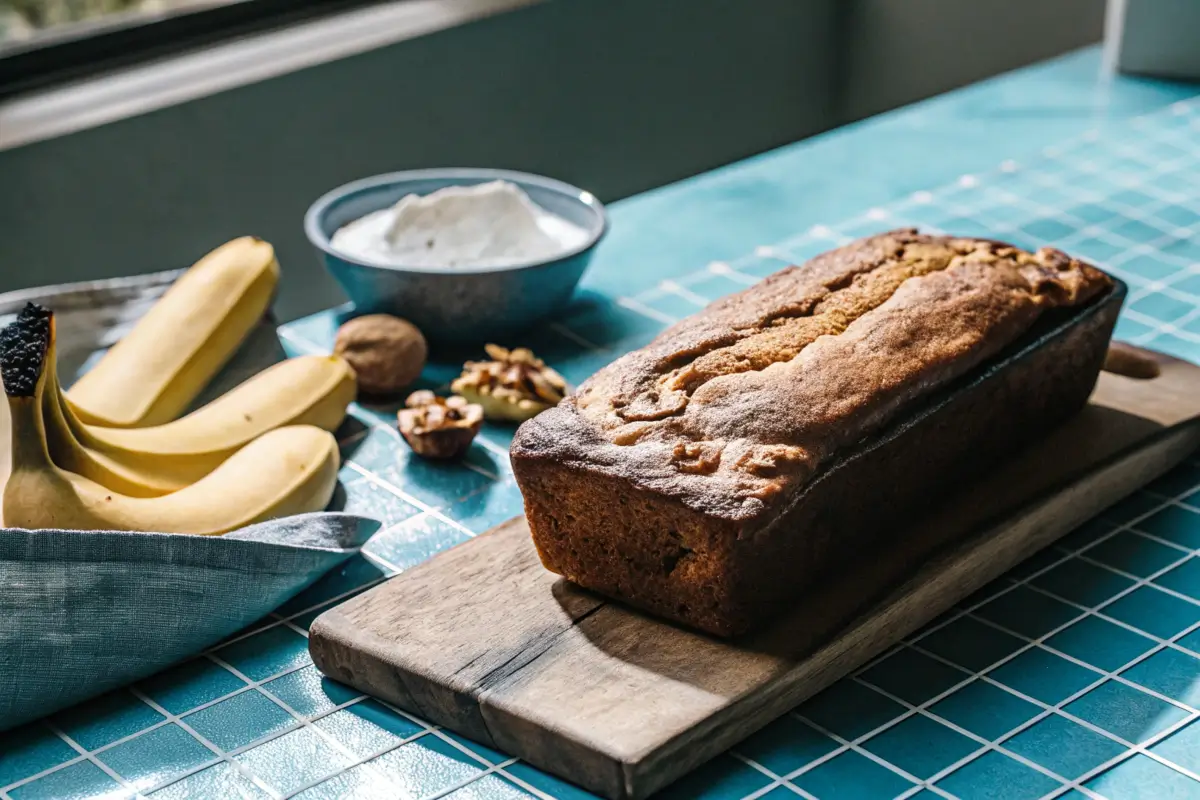H1: What Is the Number One Mistake Made When Making Banana Bread?
Introduction
Banana bread is a beloved treat, but it can be surprisingly tricky to get just right. So, what is the number one mistake made when making banana bread? Whether you’re a beginner or a seasoned baker, understanding the most common pitfalls—like overmixing the batter—can help you achieve that perfect, moist loaf every time. This article will dive into the key mistake and offer tips to ensure your banana bread is always a success.
Understanding the Common Mistakes in Banana Bread Making
Why Baking Mistakes Happen in Banana Bread
Banana bread is as much a science as it is an art. While the recipe seems straightforward, several factors can throw things off course. The most common reason for mistakes? Overlooking the chemistry behind baking. When ingredients like baking soda or baking powder aren’t measured precisely, it can wreak havoc on the rise and texture of the bread. Similarly, failing to account for the moisture content of overripe bananas can lead to a dense or soggy loaf.
But it’s not just the ingredients. Technique matters, too. Rushing through steps, skipping preheating the oven, or using the wrong mixing tools can easily result in uneven textures or burnt edges. The trick is understanding how every decision—from ingredient selection to baking time—affects the final product.
The Role of Ingredients in Common Errors
When it comes to banana bread, the stars of the show are bananas. However, not all bananas are created equal. Using bananas that are too fresh often leads to bland, underwhelming flavor. On the flip side, bananas that are too ripe or watery can introduce excessive moisture, throwing off the balance of the batter.
Other ingredient-related mistakes include:
- Skipping precise measurements: Baking requires exact amounts; a little too much flour can make the bread dry, while too much sugar can cause it to caramelize too quickly.
- Using low-quality fats or oils: Substituting butter for margarine or using an oil with a strong flavor can alter the taste and texture of the bread.
- Ignoring room temperature requirements: Ingredients like eggs and butter mix more uniformly when they’re at room temperature, which ensures a smoother batter.
The secret? Choose your ingredients carefully, measure accurately, and ensure they’re at the right temperature. With these foundational steps in place, you’re already halfway to banana bread success.
The Number One Mistake When Making Banana Bread
Overmixing the Batter: Why It’s the Biggest Culprit
The question on every baker’s mind is, What is the number one mistake made when making banana bread? The answer is simple but critical: overmixing the batter. When you overmix, you activate the gluten in the flour, which can turn a light, fluffy loaf into a dense, rubbery disappointment.
The problem lies in the tendency to “perfect” the batter by stirring until it looks completely smooth. However, banana bread batter is meant to be lumpy. Those uneven spots help create air pockets during baking, leading to a moist, tender crumb. By overmixing, you eliminate those air pockets and overwork the gluten, which makes the bread chewy instead of soft.
To avoid this, use a gentle hand. Mix the wet and dry ingredients just until combined—it’s okay if you see a few streaks of flour. Remember, less is more when it comes to achieving the ideal texture.
How Overmixing Affects Texture and Flavor
Not only does overmixing ruin the texture, but it can also affect the flavor of your banana bread. Overworked batter can taste overly “floury” or lose the subtle sweetness of ripe bananas. Additionally, overmixing can prevent the leavening agents (like baking soda) from working their magic, leading to a loaf that doesn’t rise properly.
By focusing on mixing the batter gently, you can preserve the balance of flavors and achieve a beautifully risen loaf. For more tips on baking banana bread variations, you might find this pumpkin banana loaf recipe inspiring.
Additional Mistakes to Avoid in Banana Bread Making
Using the Wrong Type of Bananas
The type of bananas you use can make or break your banana bread. Using bananas that are too fresh often results in a bland loaf, as they lack the natural sweetness and depth of flavor that overripe bananas provide. On the other hand, bananas that are too mushy or watery can introduce excessive moisture, leading to a gummy texture.
To strike the perfect balance, choose bananas with brown spots on their peel. These are packed with natural sugars and are just ripe enough to add flavor without making the batter overly wet. If you’re short on time, you can ripen bananas quickly by placing them in a warm oven for a few minutes.
Incorrect Oven Temperature and Baking Time
Another common mistake is baking at the wrong temperature. Too hot, and the outside burns while the inside remains undercooked. Too low, and you end up with a dense, soggy loaf. Always preheat your oven and use an oven thermometer to ensure accuracy.
The baking time matters, too. Resist the urge to open the oven door frequently—it lets out heat and can cause your bread to collapse. Use a toothpick to check for doneness; it should come out with a few moist crumbs, not wet batter.
For more advice on troubleshooting baked goods, check out Earl Grey cookies for inspiration on how precision affects results.
How to Avoid Common Banana Bread Mistakes
Prepping Ingredients Properly for Success
One of the easiest ways to avoid banana bread disasters is by preparing your ingredients the right way. What is the number one mistake made when making banana bread? While overmixing takes the top spot, improperly prepped ingredients are a close second.
Start by using room-temperature ingredients. Cold eggs or butter can prevent your batter from mixing evenly, leading to inconsistent texture and flavor. Allow these ingredients to sit out for about 30 minutes before baking.
When measuring dry ingredients, use the “spoon and level” method for accuracy. Scooping directly from the bag often leads to packed flour, which can make your bread dense. Instead, spoon the flour into the measuring cup and level it with a knife.
Finally, don’t forget to mash your bananas thoroughly. While chunks of banana may seem appealing, they often create pockets of uneven moisture. Aim for a smooth, pudding-like

consistency for the best results.
Choosing the Right Tools for the Job
The tools you use can make or break your banana bread. Always use a sturdy loaf pan that conducts heat evenly. Glass pans are great for consistent baking, while darker metal pans can brown the edges too quickly.
Additionally, invest in a good silicone spatula for mixing—it’s gentle on the batter and helps scrape every last bit into the pan. Avoid using electric mixers, as they can easily overwork the batter.
If you’re exploring new banana bread variations, like a pumpkin banana loaf, having the right tools ensures consistent results every time.
The Secret to Perfect Banana Bread Every Time
Embrace Simplicity and Trust the Process
When it comes to baking banana bread, simplicity is key. Many people overcomplicate the process, which often leads to mistakes. Stick to a tried-and-true recipe and follow it closely. Experimentation is fun, but too many changes at once can ruin your loaf.
One secret to perfection is allowing the batter to rest for 10–15 minutes before baking. This gives the flour time to hydrate and the leavening agents time to activate, resulting in a better rise.
Another pro tip is to resist cutting into your banana bread right out of the oven. Allow it to cool for at least an hour—this helps the flavors settle and makes slicing easier.
Experimenting with Add-Ons
While simplicity is important, the beauty of banana bread is its versatility. You can add mix-ins like chocolate chips, nuts, or dried fruit to create unique flavors. Just be careful not to overdo it—too many add-ins can weigh down the batter and affect the bake.
For more creative recipes, consider exploring articles like Muddy Buddies, which showcase how to enhance simple treats with bold flavors.
Tips for Achieving Perfect Moisture Balance
Understanding the Role of Moisture in Banana Bread
The key to excellent banana bread is achieving the perfect moisture balance. Too dry, and your loaf will crumble with every bite; too wet, and it will turn gummy and dense. Striking this balance can be tricky, especially if you’re new to baking.
Start by measuring your bananas carefully. Using more bananas than the recipe calls for can lead to excess moisture, even if they’re perfectly ripe. If your bananas are particularly large, consider using only part of one or reducing other wet ingredients slightly.
Additionally, avoid overdoing the liquids. Milk, yogurt, or oil can add richness, but too much will make the batter overly loose. Stick to the recipe and resist the urge to “eyeball” measurements. If you’re experimenting, make small adjustments to prevent ruining the texture.
Preventing Dry Banana Bread
On the flip side, if your banana bread turns out dry, it could be due to overbaking or not enough moisture in the batter. To prevent this, keep a close eye on your baking time. Check for doneness 5–10 minutes before the recommended time by inserting a toothpick into the center. It should come out with just a few moist crumbs, not wet batter.
If dryness is a recurring issue, try adding a tablespoon of sour cream or an extra teaspoon of oil to your batter. These small changes can make a big difference without overpowering the flavor. For more tips on avoiding dryness in baked goods, you might find pumpkin banana loaf recipes helpful.
How to Store and Preserve Banana Bread for Maximum Freshness
Storing Banana Bread the Right Way
Banana bread is best enjoyed fresh, but proper storage can extend its shelf life and maintain its delicious texture. After baking, allow your loaf to cool completely before wrapping it. Wrapping warm bread traps moisture, leading to a soggy texture.
Use plastic wrap or aluminum foil to seal the loaf tightly. For extra protection, place the wrapped bread in an airtight container. Stored at room temperature, banana bread typically lasts 2–3 days.
For longer storage, consider refrigerating it. However, keep in mind that refrigeration can sometimes dry out the loaf. To combat this, you can warm slices in the microwave for a few seconds before serving.
Freezing Banana Bread for Later
If you’ve made extra banana bread or want to save some for a later date, freezing is a great option. Slice the bread before freezing—it makes it easier to thaw individual portions as needed. Wrap each slice in plastic wrap and store them in a freezer-safe bag.
To thaw, leave the slices at room temperature for about 20 minutes or pop them in the microwave for a quick warm-up. Properly stored, frozen banana bread can last up to three months while maintaining its flavor and texture.
Troubleshooting Common Banana Bread Problems
Why Is My Banana Bread Sinking in the Middle?
One common issue many bakers face is banana bread sinking in the middle. This often happens when the batter is underbaked or when too much leavening agent, like baking soda or baking powder, is used. Overdoing the leavening creates too much air in the batter, causing the loaf to rise quickly and then collapse as it cools.
To avoid this, double-check your measurements and always test for doneness before removing the bread from the oven. Insert a toothpick into the center of the loaf; if it comes out clean or with a few crumbs, it’s ready.
Why Is My Banana Bread Too Dense or Gummy?
Many bakers wonder, what is the number one mistake made when making banana bread? The answer—overmixing the batter—also contributes to dense or gummy bread. Overmixing develops the gluten in the flour, leading to a heavier texture.
Additionally, not properly mashing the bananas can create wet pockets in the loaf. Always mash bananas thoroughly before adding them to the batter.
Lastly, check your oven temperature. If the oven is too hot, the outside of the bread will cook faster than the inside, leaving the middle underdone. Use an oven thermometer to ensure accuracy and bake at the recommended temperature.
Creative Variations to Elevate Your Banana Bread
Adding Flavorful Twists to a Classic Recipe
Banana bread is incredibly versatile, allowing bakers to experiment with a variety of flavors and ingredients. For a nutty twist, try adding toasted walnuts or pecans. For a sweeter option, fold in chocolate chips or swirl in some Nutella before baking.
If you’re feeling adventurous, you can even incorporate spices like cinnamon, nutmeg, or cardamom for a warm, aromatic flavor. These additions not only elevate the taste but also make your loaf unique.
For those looking for healthier options, substitute refined sugar with natural sweeteners like honey or maple syrup. You can also use whole wheat flour or add oats for extra fiber.

Exploring Unique Combinations
For something truly creative, combine bananas with other fruits. Blueberries, raspberries, or diced apples pair wonderfully with banana bread. You could even add shredded coconut for a tropical flair.
For savory variations, consider incorporating cheese or bacon into the batter. While unconventional, these ingredients can add a surprising depth of flavor.
Experimentation is fun, but remember to adjust wet and dry ingredient ratios accordingly to maintain the bread’s texture. If you’re curious about more creative ideas, explore articles like pumpkin banana loaf recipes for inspiration.

